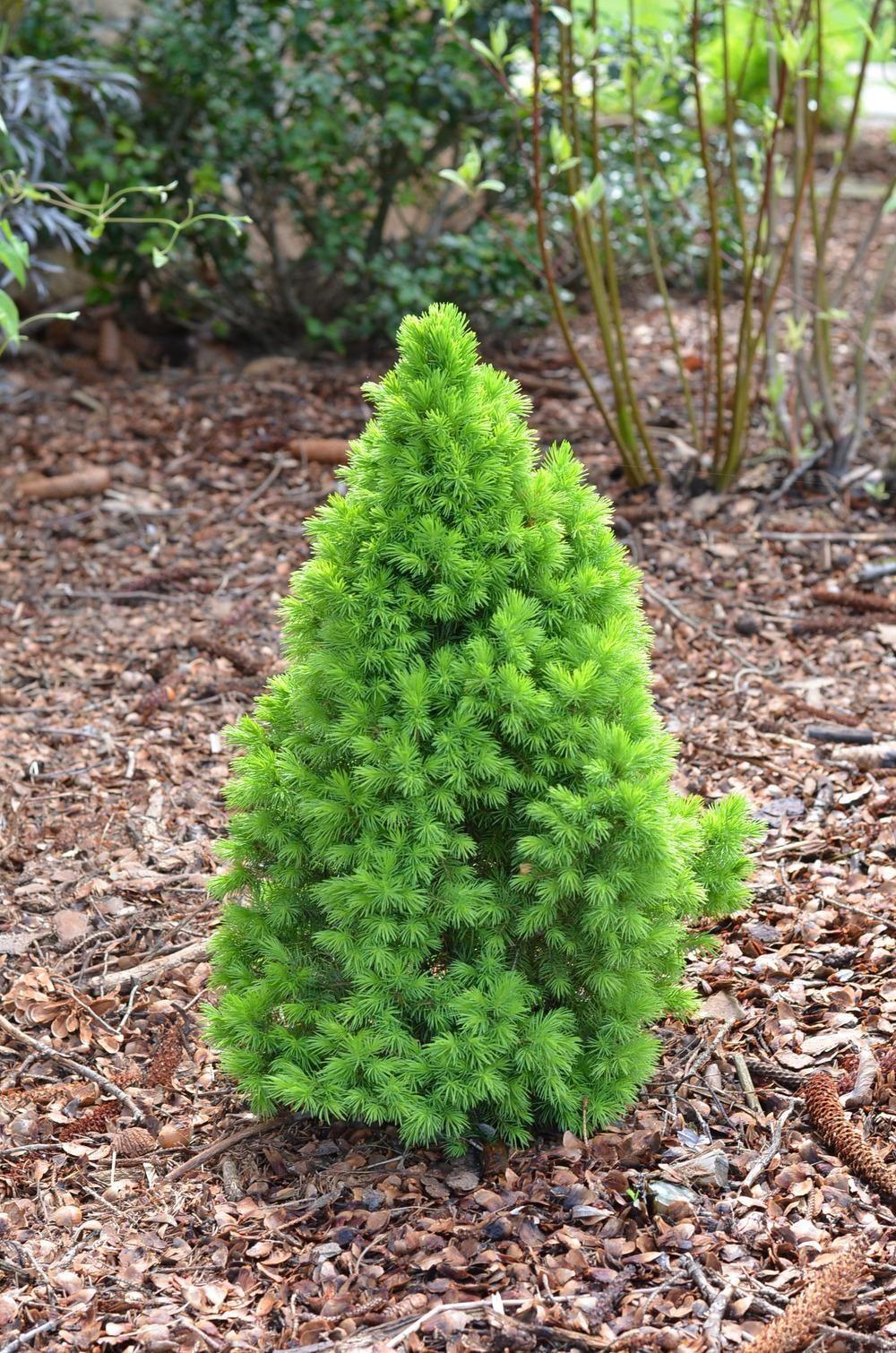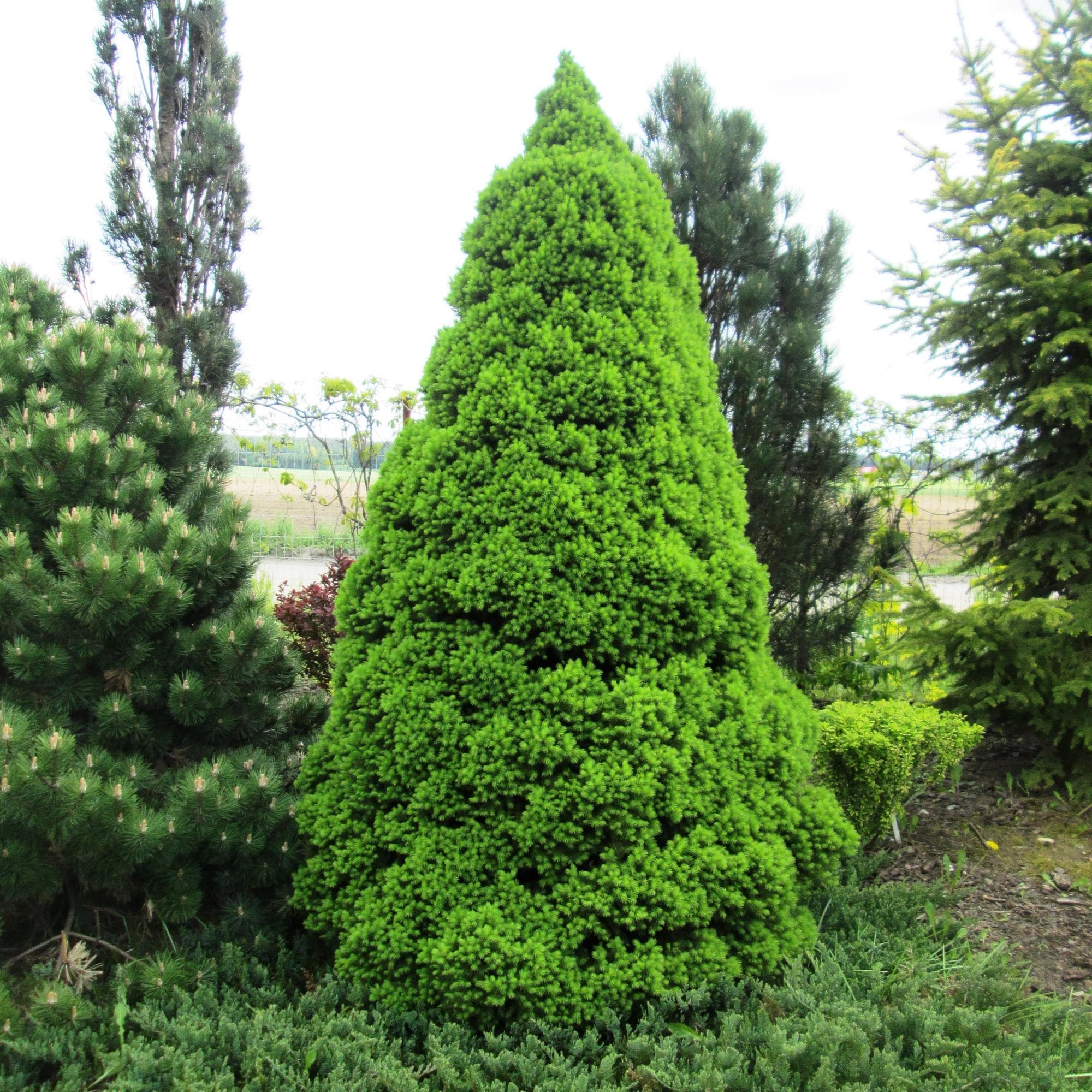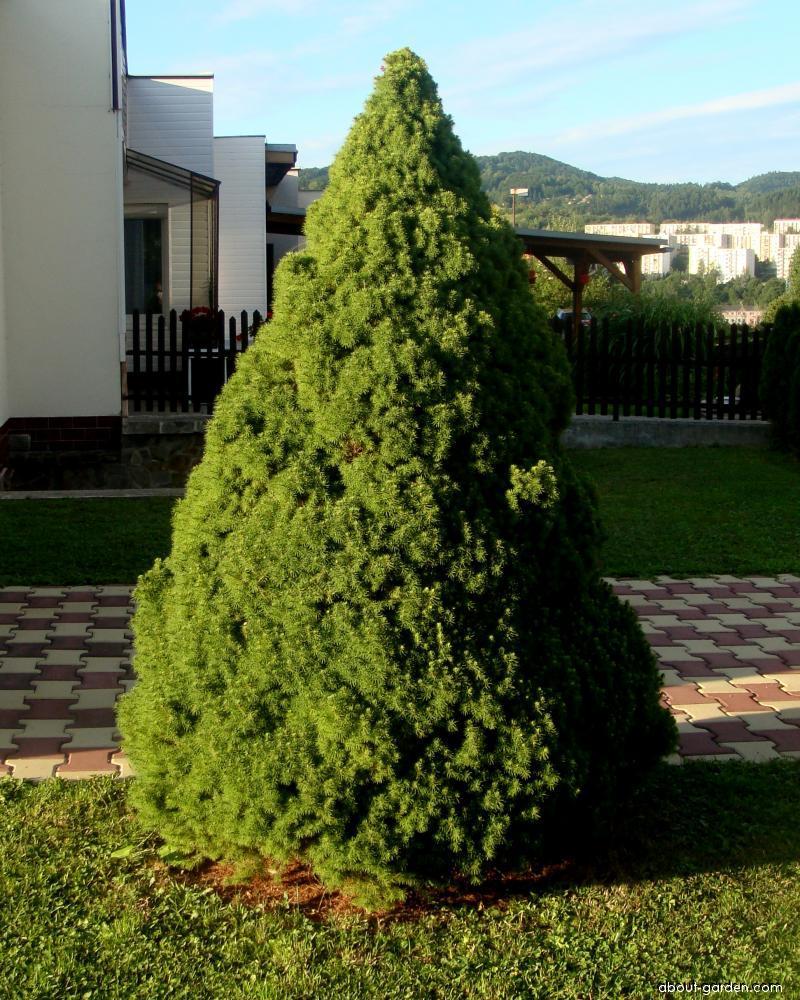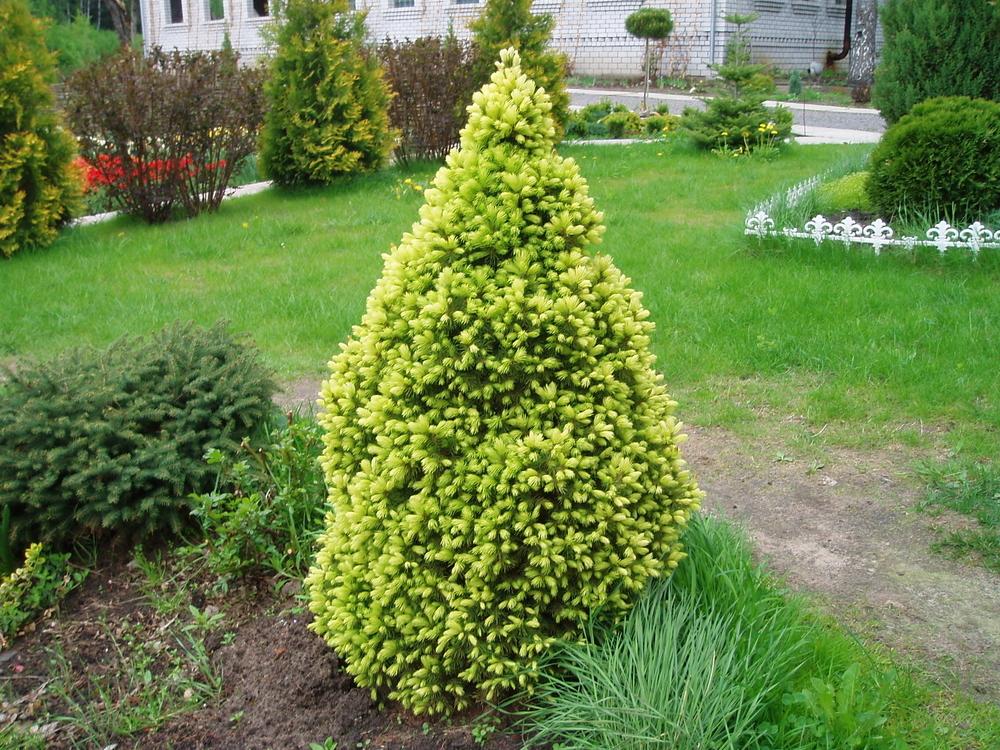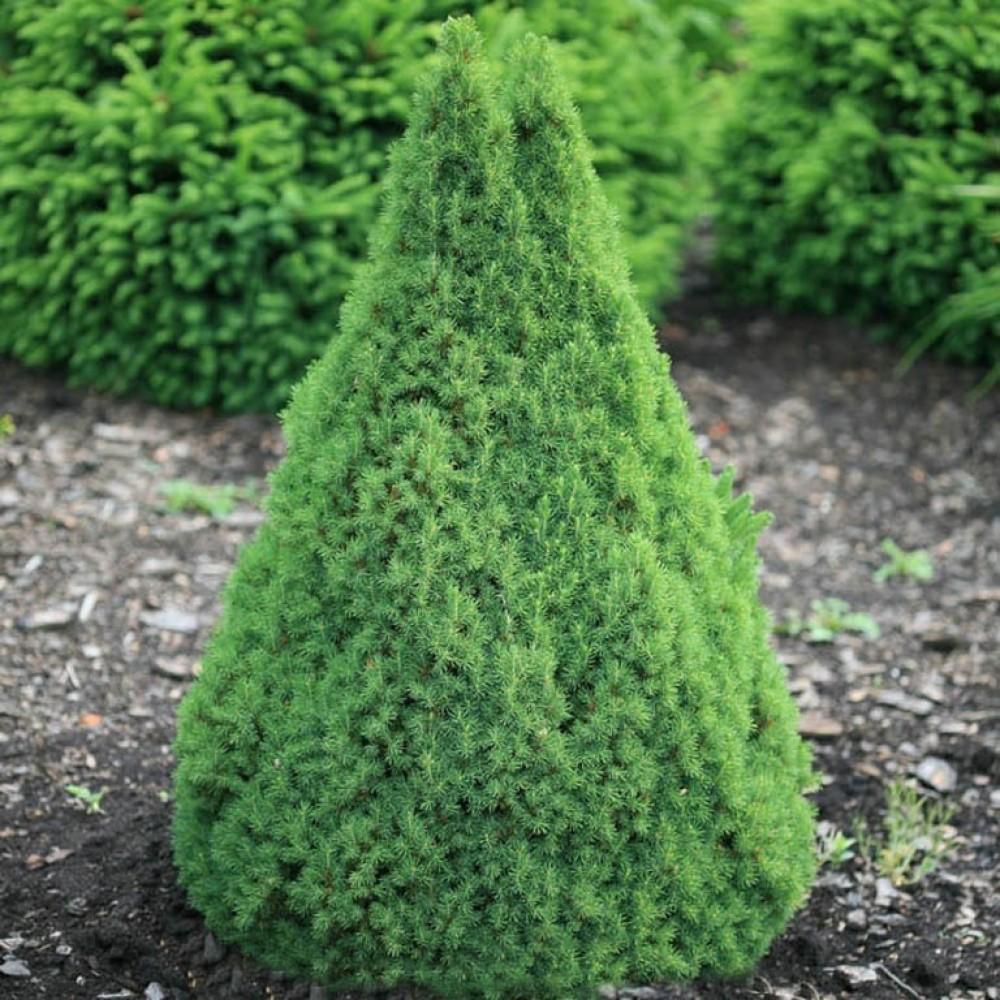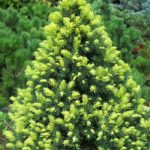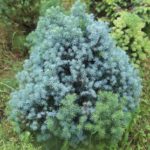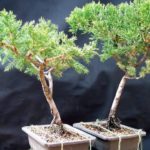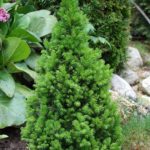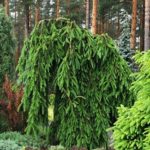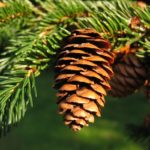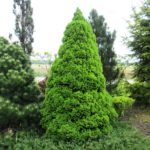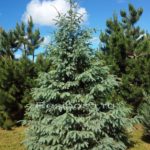Canadian spruce is often known to gardeners as gray or white. This is due to the external characteristics of culture. The underside of its needles is bluish-white in color. The most common variety of Canadian spruce is considered Konika. At the same time, many other varieties can be grown in the Russian climate. To get a strong and healthy plant, it needs to be provided with quality care.
Description
Canadian blue spruce is a fairly large plant that in natural conditions can grow up to 20-30 meters.However, such tall trees are not used to decorate park alleys or private farms. In such cases, dwarf plants are used, which reach a length of 1-1.5 meters. Sometimes they grow up to 4 meters.
The tree has a dense cone-shaped crown. Its branches are covered with thin and soft needles, which are distinguished by their frequent arrangement and slightly curved shape. In young trees, the shoots are directed upward, while in adults they are directed downwards. A characteristic feature of the plant is its blue-green color. If you rub the needles, you can smell a rather pungent odor, which is similar to the aroma of black currants.
Spruce is also distinguished by its tap root, weakly expressed. Its root system is located quite close to the soil surface. The tree grows 3-4 centimeters per year. Its growth continues for 10-15 years. In the following years, cultural development slows down. The cones are ovoid in shape. They reach 3-6 centimeters in length. The seeds are 2-3 millimeters long and light brown in color. Cones ripen in early autumn.
Varieties
Canadian spruce is characterized by quite a few varieties, each of which has certain characteristics:
- Daisy White. The shape of the plant resembles Konica. It is characterized by soft needles of a bright green color. At the same time, the spruce becomes especially decorative when new growths appear. This occurs at the end of May or beginning of June. At first they are yellow-white in color, after which they turn green. In the spring, when the first growth appears, the needles burn. The second summer growth is usually green in color. The culture is characterized by slow growth. By the age of 10, she grows to 80 centimeters.
- Alberta Globe. This variety is a coniferous evergreen plant that has a spherical shape. It is considered a mutation of Konica. The tree is characterized by slow growth. An adult plant reaches a height of 1 meter and has the same diameter. The culture is distinguished by dense needles. At first it has a greenish-yellow color, and then becomes bright green.
- Sanders Blue. This is an ornamental crop that has a conical crown. The needles are characterized by a bright blue color. The plant is considered a true dwarf. By the age of 10, it grows to a maximum of 70 centimeters. The culture is distinguished by thin and short needles, which provide the spruce with a silver-blue color.
- Echinoformis. This dwarf variety appeared in the middle of the last century in France. It is distinguished by a spherical crown and slow development. Growth usually does not exceed 2 centimeters per year. In this case, the plants are covered with small greenish-blue needles and short shoots. The spherical shape is formed by branches that stick out in different directions.
- Rainbow End. This plant has a cone-shaped shape and slow growth. By the age of 10, the plant reaches a maximum of 1 meter. During the year the tree produces 2 increments. In spring, the needles are green in color, and in summer they are bright yellow. This variety is characterized by short, soft needles.
- Blue Planet. This variety is considered little known. However, it is characterized by pronounced decorative properties. The culture is small in size and bush-like in shape. In adulthood, it reaches 50-60 centimeters. In this case, the crown diameter is 80-100 centimeters. The needles of the plant are small in size and bluish-green in color.
Zuckerhat. This is an ornamental variety of gray Canadian spruce. The plant has a dense crown of bright green color.The culture is characterized by slow development. In 1 year the plant grows by about 5 centimeters. An adult tree reaches a height of 1.5 meters. The diameter of the crown is 80 centimeters
Landing
It is recommended to plant Canadian spruce in acidic and slightly acidic soil. The plant tolerates sandy soil well. In this case, it is important for the plant to find an area that is characterized by deep groundwater. The hole for planting must be dug in advance. It should be at least 60 centimeters in diameter and 70 centimeters in depth. Of no small importance is the presence of a drainage measuring 20 centimeters.
Before planting, the crop seedling should be soaked in the Kornevin solution so that it develops better. This should be done for 6 hours. To plant a plant, you need to use a special substrate. It must be made from turf and humus. It is also necessary to add 150 grams of nitroammophoska to the composition. To improve the structure of the soil, you need to add high-moor peat to the composition. A couple of weeks before planting, the hole needs to be filled 2/3 with substrate, filled in and left as is.
Imported seedlings must be purchased from trusted suppliers. In this case, you should pay attention to the roots of the plants. It is important that the spruce be sold in burlap filled with a damp substrate.
It is necessary to plant spruce in the southern regions from October to the end of February. In the north this should be done in August. Seedlings sold in containers take root well. However, it is better not to plant the plant in hot weather. It is recommended to choose a shady place for the crop and water it before the onset of frost.
Rules of care
Growing Canadian spruce is easy. However, to preserve the decorative properties of the plant, it needs to be provided with high-quality care.In the first 3-4 years after planting, you need to properly prepare the plants for winter. This will help protect against sunburn.
In addition, when growing Canadian spruce, the following features must be taken into account:
- Choose the right soil. A plant of this variety needs loamy soil that contains a lot of humus. Poor and dry soil needs enrichment. Clay is added to dry soil. In case of excessive humidity, drainage materials are used. If the soil is alkaline, it is necessary to apply acidifying fertilizers.
- Provide adequate lighting. Only in this case will the Canadian spruce look as decorative as possible. It is important to take into account that the bright sun in spring and winter leads to burns. Winter protection helps avoid this.
- Water the plant correctly. Spruce has a shallow root system that requires systematic but moderate watering. In the fall, it is necessary to perform full moisture-recharging irrigation. Canadian spruce responds well to dousing with water. In the summer, this should be done once a week. To prevent the soil from drying out, it needs to be covered with a mulch layer 7-10 centimeters thick.
- Apply fertilizers. The use of fertilizers depends on the degree of soil fertility. Well-cultivated soil with a high humus content does not require fertilizing. When planting a plant in fertile soil, it is enough to add a bucket of mature compost.In spring, crops that have suffered from sunburn are recommended to be fed with special preparations for conifers. To quickly restore the crown, it is recommended to carry out complex spraying with Epin and Ferrovit.
Reproduction
It is recommended to propagate Canadian spruce by cuttings. Material for planting must be harvested at the end of March or beginning of April. This should be done in cloudy weather. Good results can be achieved by harvesting cuttings in the first half of June. It is important that the branch is 7-10 centimeters long and has a heel.
After cutting, the cuttings must be placed in a solution of the root formation stimulator “Heteroauxin”. In this case, only the heel and 1 centimeter of the lower part of the cutting should be in the liquid.
Prepared cuttings must be planted in individual pots, deepening them at an angle of 30 degrees by 2-3 centimeters. The soil should be light and well drained. Pots should be covered with a glass jar.
It takes 6-12 months for the culture to take root. At this time, it is necessary to properly care for the planting material. To do this, you should ventilate the shelters once a day and water the soil on time. It is best to pour water into trays. Twice a month, to moisten the seedlings, it is worth using a solution of “Kornevin” or “Heteroauxin”.
In order for the cuttings to grow a little, they need to be planted in a schoolhouse. After 1-2 years, it is recommended to plant the plants in a permanent area.
Diseases and pests
The main diseases that Canadian spruce suffers from include the following:
- Schutte – This disease is also called brown snow mold. It appears in the spring after the snow melts and the branches are exposed.The causative agents of the disease actively develop on branches covered with snow. It is possible to get rid of pathology with the help of “Foreshortening” or “Homa”.
- Rust – also called spruce rust. The causative agent of the pathology is a pathogenic fungus, which can be easily identified by small orange swellings on the bark. Over time, infected crops turn yellow and lose their needles. As a result, the plant does not look very attractive. To cope with the pathology, you need to promptly trim the damaged fragments and burn them with fallen pine needles. Infected plants must be treated with Hom or Racurs.
- Tracheomycosis - manifests itself in the form of the formation of a reddish coating on the needles. It quickly turns brown and crumbles. The pathology cannot be cured. This is due to the fact that pathogenic fungi affect the entire root system. At the same time, it is important to dig up and burn the affected crop in time so that the disease is not transmitted to other conifers. Fundazol is used to disinfect soil.
At the same time, Canadian spruce not only suffers from diseases, but is also subject to attacks by pests. Common parasites that cause crop damage include the following:
- Spruce false scale - when a tree is damaged by these pests, a sticky coating remains on the bark and needles, which provokes the fall of brown needles and deformation of the shoots. Systemic remedies help protect plants from this parasite - in particular, Confidor and Aktara. The second preparation needs to be sprayed not only on the spruce, but also on the ground around it.
- Spruce spider mite - if a plant is damaged by these parasites, small yellow spots form on the needles, which envelop the affected branches in cobwebs and cause the needles to fall off.During the season, ticks produce up to 5 generations of offspring. Therefore, plants should be sprayed at least 5 times. It is best to do this at the end of summer. To do this, it is permissible to use such products as “Antikilesch”, “Aktellik”, “Fitoverm”.
- Spruce sawfly - these parasites infect trees with larvae and eat needles. In this case, the needles become brown and fall off. “Pinocid” copes most effectively with parasites. It can be used for spraying the crown and watering tree trunks.
Application
You can plant a tree on your property for the purpose of decorating it. This culture is often used in landscape design.
Role in landscape design
Canadian spruce has excellent decorative properties. Young trees combine well with other crops and are used to decorate alleys, rock gardens, and flower beds. Low growing plants look good on terraces. They look best when combined with flowers.
Interesting Facts
Canadian spruce is considered a very interesting plant:
- Under natural conditions, the tree grows up to 20-30 meters in height.
- All types of such spruce trees are considered long-lived. They can last up to 500 years.
- Cones appear on trees once every 10 years. They have a beautiful elongated shape.
- The needles are small in size, but are quite prickly.
- When severely overheated, the needles change color.
Canadian spruce is a beautiful ornamental crop that can decorate any area. To grow a tree successfully, it needs to be provided with adequate care.

